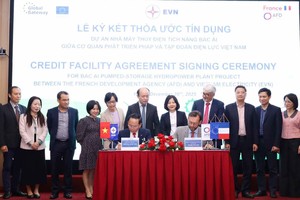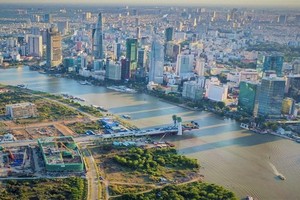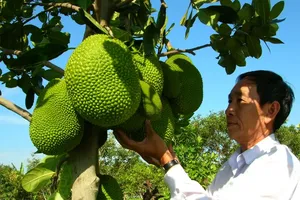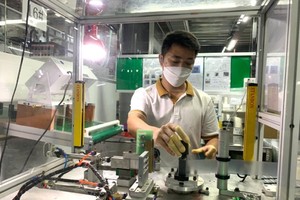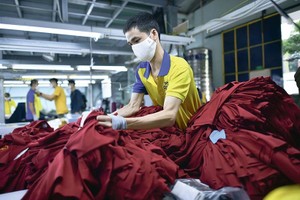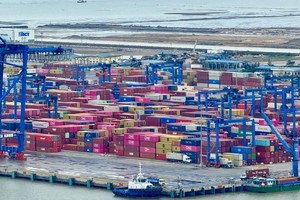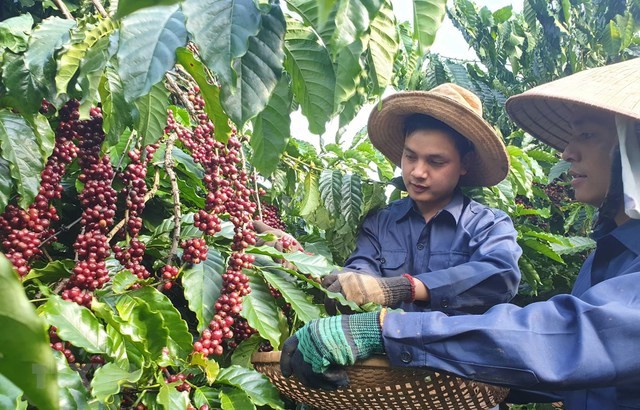 |
Vietnam exported 1.7 million tons of coffee in 2022, earning US$3.9 billion. — Photo chinhphu.vn |
According to Do Ha Nam, Vice Chairman of Vietnam Coffee and Cocoa Association (Vicofa) and chairman of Intimex Group, in the 2022-23 crop, the coffee output is expected to decrease by 10-15 percent on year to 1.47 million tons.
The coffee growing area tends to decrease because growers switch to planting other trees with more economic efficiency such as durian and avocado or intercropping in the garden.
The export volume of the 2022-23 crop is also forecast to decrease sharply compared to the previous crop due to little inventory from the 2021-2022 crop.
The exchange rate between the Vietnamese dong and US dollar is fluctuating. That can cause risks, affecting the offered export price.
The coffee industry must have mechanisation in harvesting coffee due to a lack of labour, especially young workers that do not want to work in raw material areas.
However, Vietnamese coffee now has advantages in competing with Brazilian coffee, a rival coffee exporter with Vietnam in the global market, according to Nam. Especially, in the context that the European Union continues to strictly implement standards in using Glyphosate, a kind of herbicide, Vietnamese coffee is assessed to meet those standards. This is the main competitive advantage against Brazilian Robusta.
In addition, the freight rates to Europe and the US have decreased sharply compared to that in the 2020-2021 crop. It will also be a favourable factor for Vietnam's coffee exports this year.
To continue the sustainable development of the coffee industry in the future, the Ministry of Agriculture and Rural Development will focus on reviewing the scale of coffee development.
The ministry will promote research on high-yield and high-quality coffee varieties and implement technical packages for cultivating high-quality coffee.
It will also promote safe production for reducing carbon emissions, organise production chains, and improve processing capacity and training of human resources.
At the same time, the ministry will promote calls for investment in the coffee processing industry, and build and perfect the market information system for processed coffee products.
It will promote Vietnamese coffee brands and culture, and consolidate the traditional coffee export markets such as the EU, the US, Japan and South Korea, besides developing potential markets of ASEAN and China.
The ministry will promote negotiations to build a retail system for Vietnamese processed coffee in the global market.
Meanwhile, domestic coffee consumption is expected to increase by 5-10 percent in the coming years.
Therefore, many instant coffee processing plants have been built or expanded each year with higher capacity such as Marubeni, Louis Dreyfus and Instanta, Intimex Group and Olympic.
The companies have promoted the development of coffee shop chains. Newly opened or reopened coffee shops are expected to quickly develop or recover operations as before the pandemic.
Phung Duc Tien, Deputy Minister of Agriculture and Rural Development, said that Vietnam's coffee production was facing many challenges, including high growth but not sustainable development.
Forms of cooperation from production to purchasing, processing and consumption of products had not had close linkage.
The coffee industry still had many potential risks from changes in climate conditions to consumption markets.
To support the coffee industry in sustainable development, Nam said that the State should ensure disbursement in capital of banks for production, processing and export.
In addition, the re-planting is not yet synchronised, only in a few areas with the advantage of growing coffee such as Lam Dong and Dak Nong, so it will be necessary to promote the re-planting of coffee trees in other localities being able to grow coffee trees, according to Nam.
At the same time, it needs to promote the implementation of sustainable coffee and coffee quality programs.
Besides stabilising the existing coffee area, it also needs to develop Arabica coffee area in eligible areas, mainly in the Northwest, Central Highlands and North Central of Vietnam. That will contribute to increasing export output and high-quality coffee products in the future.
Tran Vinh from the Central Highlands Agriculture and Forestry Science Institute said Arabica coffee only occupied a small area out of the total coffee area in Vietnam, reaching about 50,000 hectares, equivalent to about 8 percent of the total area. This kind of coffee was concentrated in regions of some provinces such as Lam Dong, Kon Tum, Son La, Dien Bien and Quang Tri.
Vietnam's Arabica coffee products faced difficulties in competing with the same products made in other countries because of unsustainable farming practices, and low production and processing outputs.
According to the coffee replanting project in the 2021-25 period of the Ministry of Agriculture and Rural Development, Vietnam re-cultivates coffee in a total area of about 107,000 hectares, including Arabica and Robusta coffee. Of which, the re-cultivation area of Arabica coffee is about 20,000 ha in the Northwest and 12,000 ha in the North Central.
At present, high-quality and specialty coffee products have not yet developed strongly, according to Vinh. However, the selling prices of those products are very high, the coffee industry needs to increase the rate of processed coffee products to about 15 - 20 percent of the total Arabica coffee of Vietnam.
In areas with high capacity such as Arabica coffee production areas in Lam Dong Province, coffee growers need to carry out the right production process and join certified organisations for producing high-quality Arabica coffee. Those create specialty coffee products associated with regional brands.
Lam Dong has famous Arabica coffee production areas such as Cau Dat and Lac Duong with recognised brands of "Arabica Langbiang Coffee" and "Cau Dat Coffee - Da Lat".
Vietnam exported 1.7 million tons of coffee in 2022, earning US$3.9 billion, according to the Vietnam Coffee and Cocoa Association.
